|
Finding a Relative --- On
our first trip to Poland, we visited Wlodarka, which was known as Voigtshagen prior to the end of WWII. We had links to this village as
some of our earlier relatives at one time lived in this village and we did
find notations in church records to that effect. Therefore it was very
interesting to see the beautiful church at what I will refer to as
Voigtshagen for this story.
|
Voigtshagen
was a very small, quiet village as are most of the villages in this
area. Typically a small village had one main road passing through the
center with one or two paved side roads. The picture to the right is of
one side road in Voigtshagen, it happens to be directly in front of the
church. In the picture to the right is the famous "Grutzturm" which was
part of the
defense wall of Treptow built in the 12th or 13th century. Directly to the right,
up on the hill is where the church is located. Yes, the tower is
leaning! Behind the wall on the left is an old Manor.
|
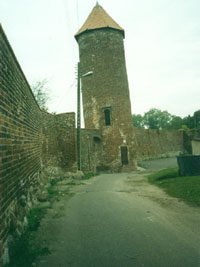
|
|
|
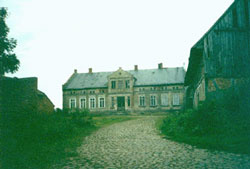 |
This Manor, located at Voigtshagen was most probably built
in the early 1800's and was inhabited by a Landlord who typically
controlled a large estate. The Landlords power and influence was a
tangible thing. His sword protected the village, but he demanded of the
villagers serfs and budeners, a good days work, rent, and dues which were collected
annually. If the dues were not paid on time to the Landlord, oftentimes
there was great danger for the serfs to lose their land to the Landlord.
A Büd(e)ner is a small farmer. They did not own a real farm, just
so-called "Buden" stalls. They were small farmers with about 12-
25 acres land. A real farmer had over 50 acres land. In the
18th century a lot of people became Büdners. They received some land
in the unused area, mainly very bad land. Most of the time the land had to
be cultivated, because it was flood areas, wood lands ond swamp lands. That
is land no one else wanted. |
|
| When we
arrived at the village of Voigtshagen, we excited at the possibility of
finding some of the original grave markers that used to be around these
Lutheran Churches. However, after climbing the stairs up to the church
and entering the surrounds, we found only three crosses still standing in the
cemetery. They were hidden by some brush up against the wall.
None of the names on the standing crosses were familiar nor did they have any
particular meaning to us. |
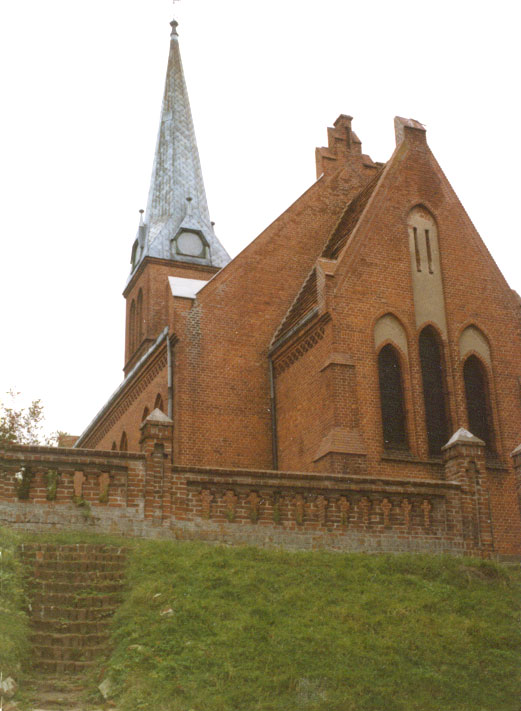 |
|
|
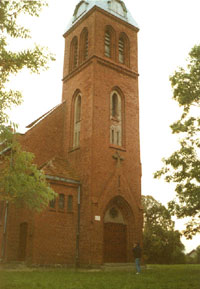 | Upon arriving at
the church, my sister proceeded to the right of the church and then to the
back of the building. She began looking around in the weeds and the
brush that had grown up. She yelled to us that she had found something
under the brush. We began digging, pullout weeds and brush, we found
discarded tombstones and crosses that were obviously markers in the cemetery
that once surrounded this church. As you can see at the left, the
church yard was mowed, not a grave in sight. |
|
| These are the
crosses we began to pull out. Each was about 3 feet high and 2 1/2 feet
across. The third cross we extracted from the brush was a Heuer.
More importantly, she was someone we had traced from our family. |
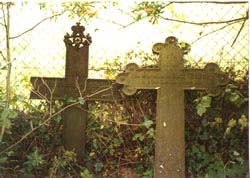 |
|
|
 | This is the Cross
Marker from the grave of:
Mathilde
geb Heuer Gronnau- Born 1837, died May 21, 1911
After finding this cross,
we began checking with the Polish Authorities as to the disposition of this
cross. If this cross was disposed of, would it be possible to bring
this cross to America? We started this query in Stettin at the office
of Polish Archives.
Click here for mor information!
|
|
The
picture to the right is clearly shows what has happened to many of the grave
markers from the old Lutheran German churches. The picture on the right
was taken at Behlkow, the stones used to build the fence around the church
yard were headstones from the cemetery. On this picture, you can distinguish
8 headstones, the one in the center on top had the inscription of the
deceased facing up....... | 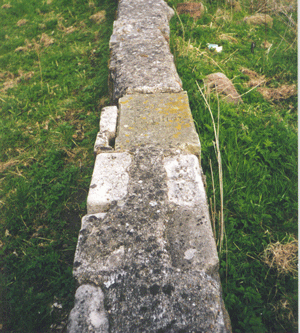 |
|
|